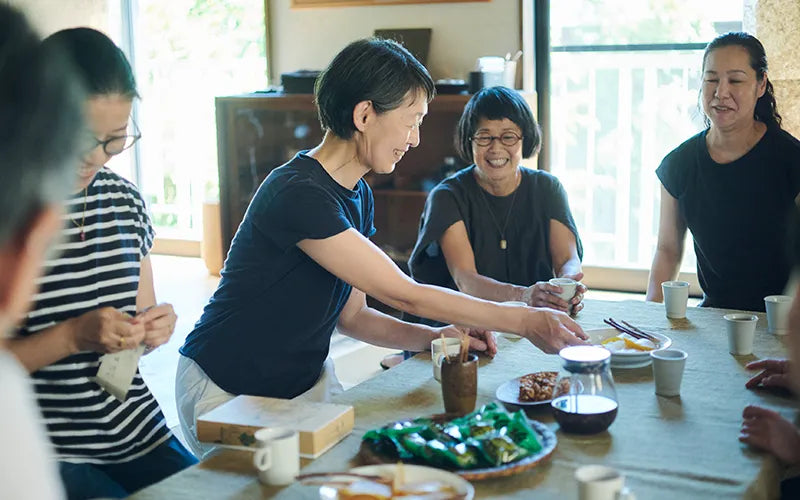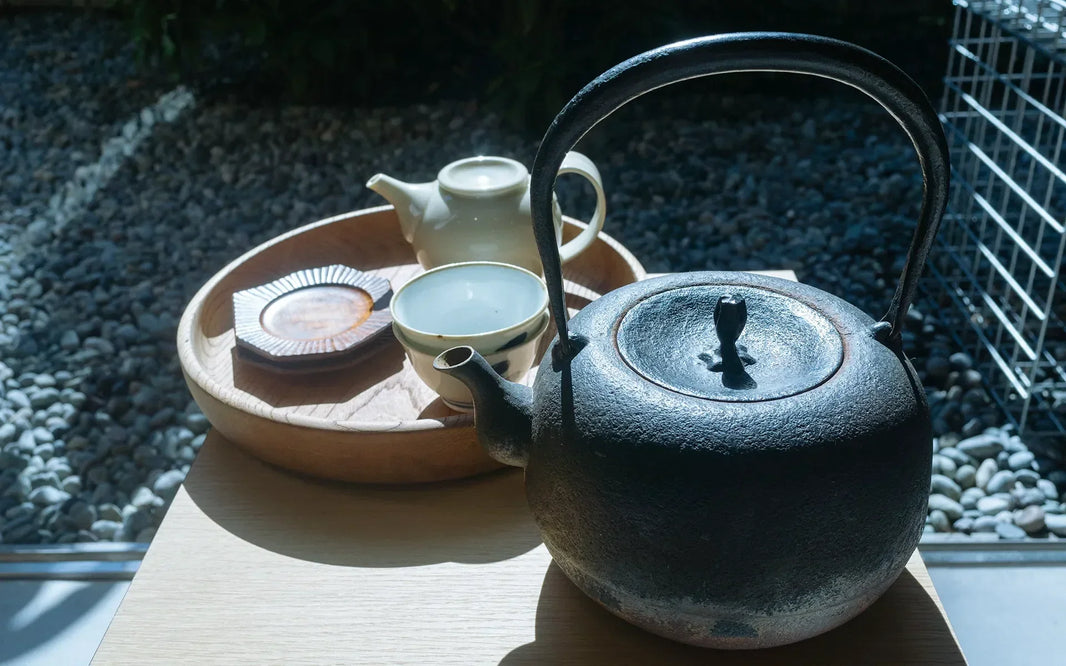
Hello, I'm Kumi Hosogaya.
Are you more of a coffee or tea person? While I do drink coffee when I'm out, at home it's almost exclusively tea.
Although tea seems to be losing ground to the surging popularity of coffee these days, Japan produces quite a number of tea varieties across several regions, particularly in temperate areas. There are also various production areas for teapots (kyusu), with famous ones including Tokoname and Banko ceramics, Shigaraki pottery, Arita porcelain, and Nambu cast iron.
Tea is such an everyday presence that we might take it for granted, but this speaks to Japan's deep-rooted tea culture. It's something I personally love, and I'd like to reintroduce you to tea's delicious qualities and enjoyment.
Choosing the Right Tea Vessel - Essential for Tea Enjoyment
I drink different types of tea depending on the time and mood - sencha, hojicha, black tea, flavoured teas, grain teas, and herbal teas.
Just as coffee has various origins, blends and roasts, tea comes in different forms, each with its unique aroma, taste, and colour. Drawing out these qualities might be considered the true pleasure of enjoying tea. To experience this, selecting the right vessel, particularly the pot, is crucial for bringing out the best flavours.
You might think this sounds rather fussy, but I'd be delighted if this encourages you to try brewing tea carefully using a kyusu.
Incidentally, aside from herbal teas, all 'true' teas - Japanese, black, and Chinese - come from Camellia sinensis, a member of the camellia family. The variations come from soil, climate, and especially processing methods.
Chinese teas, particularly oolong, reportedly include over 1,000 varieties with distinct cultures and brewing methods from Japanese tea. Today, I'll focus on Japanese tea, sharing my personal recommendations for tea leaf and vessel pairings. The vessels in the photos are my own - please use them as reference for shapes.
Common Japanese teas include sencha, hojicha, bancha, and genmaicha. Those who particularly enjoy green tea's umami might also drink gyokuro or kabusecha. Lower temperatures are best for umami, while higher temperatures bring out aroma and astringency - around 60°C for gyokuro, 80°C for sencha, and nearly 100°C for hojicha, bancha, and genmaicha. Water temperature relates to vessel choice.
Kyusu (Teapot)

The kyusu is ideal for sencha. It has a handle perpendicular to the spout, and you hold it with your thumb on the lid to squeeze out every last drop. Always check how it feels in your hand.
Ceramics are preferable to porcelain. The clay body removes harsh notes, creating smoother flavours. Since it retains aromas, avoid using detergent.
Famous production areas like Tokoname (Aichi) and Banko (Mie) specialise in ceramics. A slightly wider lid tends to be more practical for both brewing and cleaning.
Shiboridashi (Press-pour)

These handle-less vessels are wonderfully minimal. Space-saving with no strainer to clean. Perfect for casual brewing, though not suitable for boiling water. Ideal for lower-temperature teas like gyokuro and sencha. This traditional shape has long been used in Uji.

There's also a handled version, designed for easier pouring and cleaning. It's versatile enough for sencha, genmaicha, and hojicha.
Dobin (Clay Pot)

Perfect for hojicha and bancha that need lots of hot water. These have vine-shaped handles on top and come in both ceramic and porcelain. Their larger size works well for teas with bigger leaves.
Thick-walled versions retain heat nicely for second servings. In my house, we use it for grain tea after dinner, topping up with hot water. Its relaxed appearance suits leisurely tea times.
Iga is famous for dobin, originally making fire-resistant versions for direct heat. These are rare now, but I'm rather intrigued by them.
Pots

These have vertical loop handles opposite the spout. While teapots suggest black tea, small versions are common for Chinese tea.
Modern designs are quite versatile, though size matters. Japanese black tea is trending now - rounded, larger pots are ideal as they allow leaves to unfurl through water circulation. Heat-resistant glass pots make this process visible.
Bonus: Heat-resistant Glass

Double-walled glasses, while not teapots, are handy for hot tea. Even tea bags benefit from proper steeping time for better flavour and aroma.
Find your favourite vessel and experiment to discover your preferred taste. Tea-making isn't complicated - brewing it as if serving others might make it taste better.
Tea isn't just for thirst - it's about enjoying the moment. Once you get interested, try hosting casual tea gatherings matching teas with vessels. Create your own tea time that suits you.
Authour: Kumi Hosogaya
Former buyer at Nakagawa
Independent since 2018
Tokyo native. Worked in tea trading before entering crafts industry. Passionate about both tea and crafts. Loves discovering local crafts, good food, bakeries, and cats while travelling. Currently balancing minimalism with shopping. Aims to introduce wonderful crafts.







